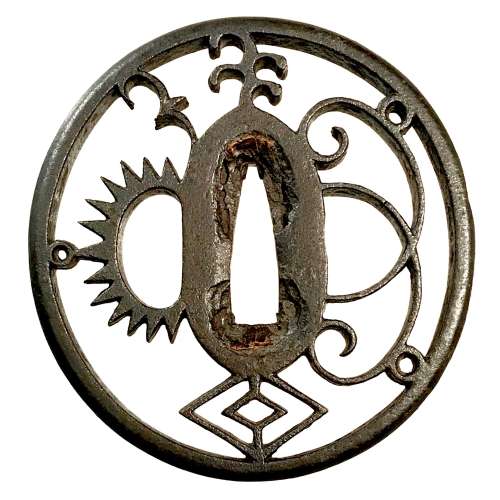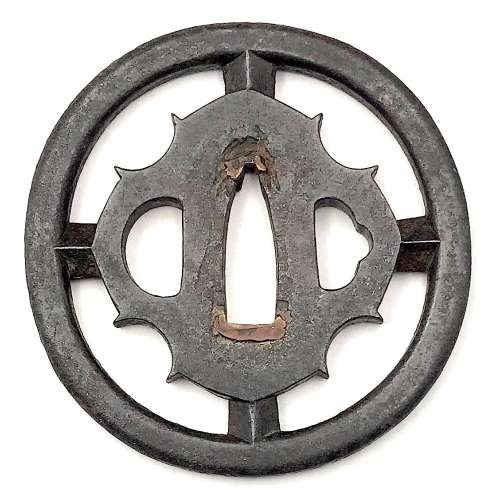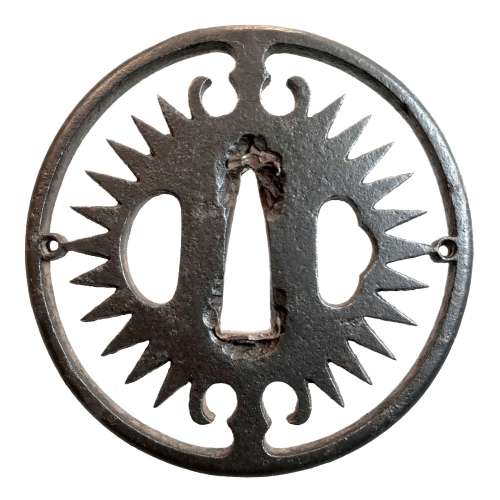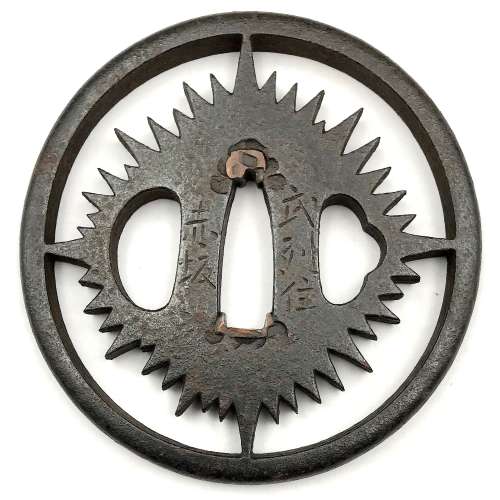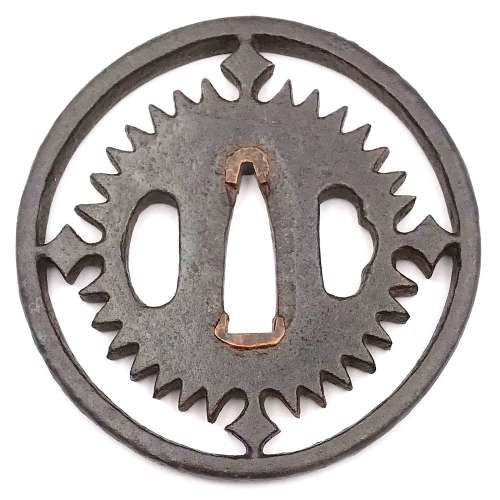Iron tsuba of round form with design of slanting rays of light (
shakoh) or clock gear (tokei) in openwork (sukashi). Commonly considered a Christian / Jesuit motif. Copper sekigane.
According to seller, Owari School. Haynes writes that most tsuba of this design are Owari (Tsuba. Aesthetic Study).
Unsigned.
Edo period. According to F. Geyer, diamond-shaped vertical posts and long rays suggest that this tsuba was probably made between 1605 and 1630.
Size: 76.9 x 76.0 x 5.4 mm
For information regarding
shakoh tsuba see article 'Kirishitan Ikenie Tsuba by Fred Geyer at Kokusai Tosogu Kai; The 2nd International Convention & Exhibition, October 18-23, 2006, pp. 84-91.







